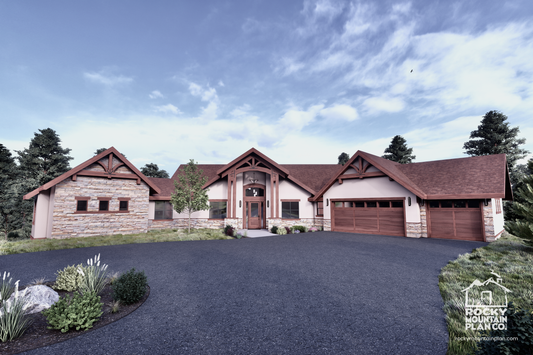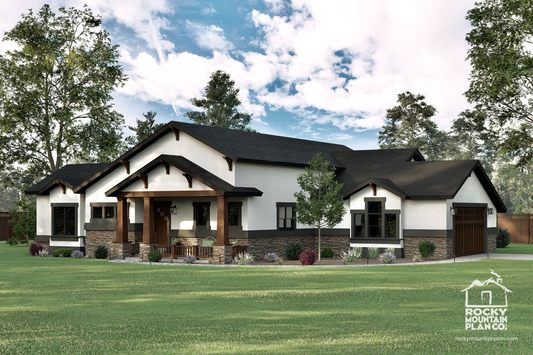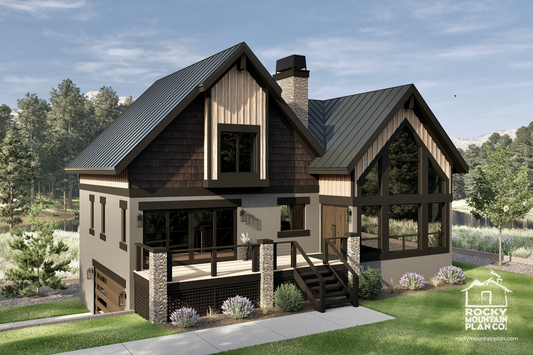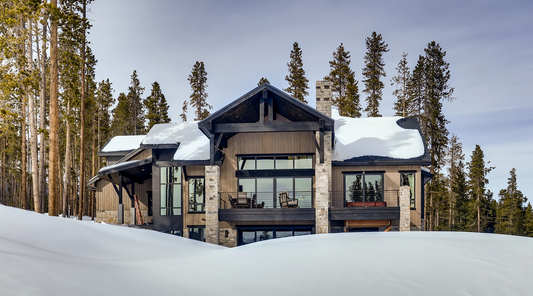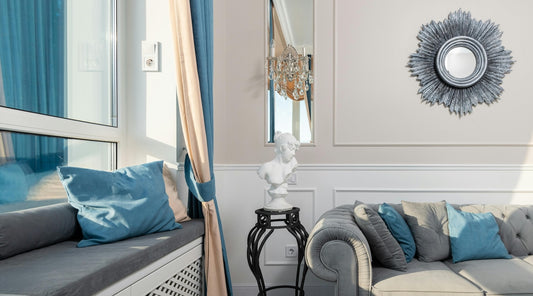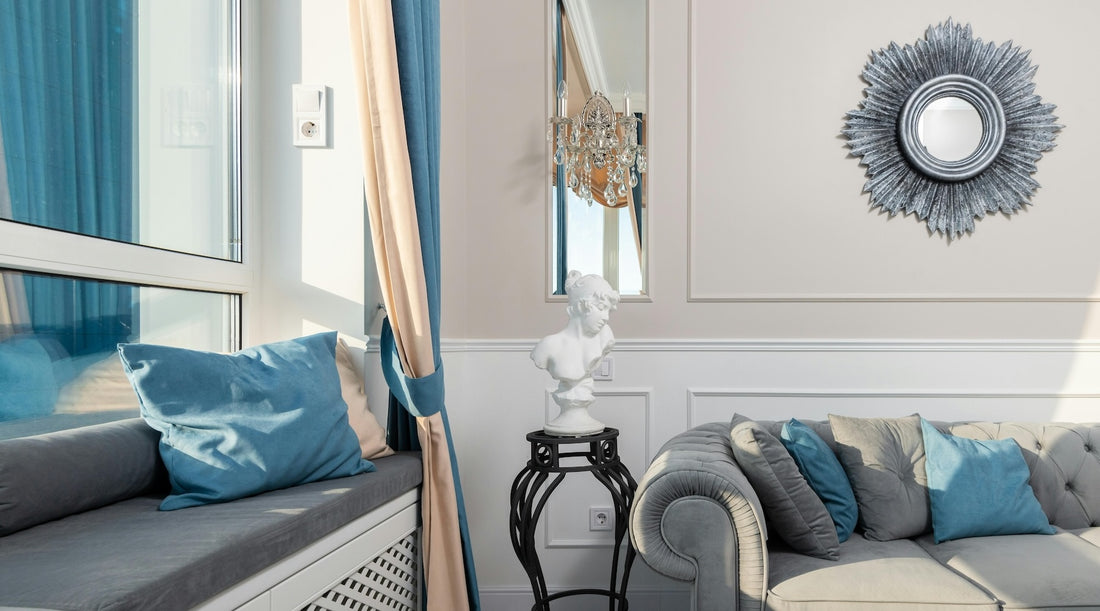
Harnessing Sun Exposure: How Different Sun Exposures Affect Your Home
Share
When you’re building or buying a home, it’s easy to focus on square footage, design aesthetics, and floor plans. But there’s another crucial factor that many overlook – sun exposure. The orientation of your home and how it interacts with the sun throughout the day can significantly impact your living experience, affecting everything from natural lighting and temperature control to energy costs. Understanding the various sun exposures can help you optimize your home's layout for comfort, energy efficiency, and even resale value.
Let’s explore how the different sun exposures – north, south, east, and west – affect your home and how you can make the most of them.
North-Facing Exposure: Soft and Cool
A home with a north-facing exposure receives soft, indirect sunlight throughout the day. While this can prevent harsh sunlight and glare, it also means less natural warmth compared to other exposures.
- Light: North-facing rooms get consistent, diffuse light but can feel dimmer, especially in the winter months when the sun is lower in the sky. If you prefer a cooler, more muted ambiance, north-facing rooms will provide just that.
- Temperature: These rooms tend to stay cooler, which can be a benefit in warm climates but may require additional heating in colder regions.
- Best Uses: Utility rooms, garages, or home offices benefit from this exposure, where softer light can reduce glare without causing heat buildup. It's also ideal for art studios where consistent, indirect light is preferred.
Tip: North-facing rooms can feel colder in winter, so consider using warmer tones in the décor or extra insulation to offset the chill.
South-Facing Exposure: Warm and Sunny
South-facing homes are the sun lovers of the bunch. If you enjoy bright spaces and want to take advantage of natural heating, this is the perfect exposure for your main living areas.
- Light: These rooms are bathed in sunlight throughout the day, especially during the winter months when the sun is lower. The steady sunlight makes these spaces feel vibrant and welcoming.
- Temperature: Thanks to passive solar heating, south-facing rooms can help you reduce heating costs in the colder months. However, in hot climates, these rooms can overheat unless you install shading, like curtains or external overhangs.
- Best Uses: South-facing rooms are ideal for high-use areas like living rooms, kitchens, and dining rooms. They're also perfect for sunrooms and spaces where indoor plants thrive. Solar panels on a south-facing roof can generate maximum energy.
Tip: To avoid overheating in the summer, install light-filtering window treatments or plant deciduous trees that provide shade during warmer months and let sunlight in during the winter.
East-Facing Exposure: Bright and Cool Mornings
An east-facing home wakes up with the sun, basking in bright light during the early hours but cooling off in the afternoon.
- Light: East-facing rooms enjoy direct sunlight in the morning and are shaded by the afternoon, which means you’ll get soft, cooling light for the rest of the day.
- Temperature: The gentle morning warmth is perfect for spaces like kitchens and bedrooms, where you can start your day with natural light. These rooms tend to stay cooler in the afternoon, reducing the need for air conditioning.
- Best Uses: Bedrooms, breakfast nooks, and morning workout spaces all benefit from east-facing exposure. It’s also great for growing plants that prefer moderate light without harsh afternoon sun.
Tip: East-facing rooms are great for early risers or families with small children, as the natural morning light can help regulate your sleep cycle.
West-Facing Exposure: Afternoon Glow
West-facing homes catch the sunset and provide strong afternoon and evening sunlight, which can be both a blessing and a challenge.
- Light: West-facing rooms receive strong, direct sunlight in the late afternoon and evening. This makes them perfect for enjoying sunsets and bright evenings, but also means they can heat up quickly.
- Temperature: The intense afternoon sun can make west-facing rooms warmer, which is beneficial in cooler climates but may require extra cooling during the summer.
- Best Uses: Living rooms, dining areas, and patios with west-facing exposure are perfect for enjoying sunset views. However, these spaces may need effective shading solutions, like blinds, curtains, or even outdoor pergolas, to manage the late-day heat.
Tip: Consider using reflective or heat-blocking window treatments in west-facing rooms to keep them cooler while still enjoying the beautiful late-day light.
How to Optimize Your Home’s Sun Exposure
Understanding how the sun affects each area of your home allows you to optimize comfort and energy efficiency. Here are a few additional tips for making the most of your home’s sun exposure:
- Energy Efficiency: In colder climates, maximize southern exposure for passive solar heating, reducing energy costs. In hotter regions, reduce sun exposure by installing shading on south- and west-facing windows.
- Maximizing Natural Light: Use large windows or sliding doors in south-facing rooms to capture as much natural light as possible. In contrast, limit large windows on west-facing walls if overheating is a concern.
- Landscape for Shade: Planting trees, particularly on the western and southern sides of your home, can provide natural shading and help control temperature inside your home.
- Interior Décor: Use lighter colors and reflective surfaces in rooms with strong sunlight to amplify the light, while deeper tones can absorb and diffuse light in areas with less sun exposure, creating a cozy feel.
Final Thoughts
When orienting your home, sun exposure is more than just a detail – it’s a key factor that can impact your daily comfort, energy bills, and overall living experience. By understanding the benefits and challenges of north, south, east, and west-facing exposures, you can tailor your home’s design to take full advantage of natural light and temperature control.
Are you ready to find a home plan that perfectly matches your lifestyle and maximizes sun exposure? Explore our collection of thoughtfully designed house plans that balance comfort, style, and energy efficiency, no matter the direction your home faces.
